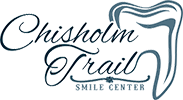Laser treatments, sometimes called laser therapy, have been approved for a number of medical and cosmetic purposes, ranging from tattoo and hair removal to cancer treatments. The treatments all use a strong beam of light to cut or destroy unwanted or decaying tissue, including decay within teeth. The practice of using laser treatments in dentistry has grown in recent years, following advancements in laser technology. Because the beam is small and focused, it minimizes the chances of damaging surrounding tissue. Dr. Matthew Bridges uses laser dentistry to perform a range of dental treatments at his Chisholm Trail Smile Center in Duncan, OK.
The Evolution of Laser Dentistry
While the history of laser began in 1951, the first medical application was reported by Goldman, a dermatologist, in 1962, according to the U.S. National Library of Medicine National Institutes of Health. Cardiovascular surgery saw the first use of lasers in 1963 as a method to treat atherosclerotic plaques. The earliest clinical applications of lasers were performed by Choy and Ginsburg in 1983.
Lasers have been used by dentists since 1994. The U.S. Food and Drug Administration approved laser treatments for tooth decay in 1997. The FDA now states that laser dentistry as “safe and effective” as a drill for eliminating dental decay and filling preparation.
The FDA also cited studies that indicated the lower need for anesthetics for pain.
When asked about the most important developments within laser dentistry, Ed Kusek, spokesperson for the Academy of Laser Dentistry, said in an article for ModernDentalNetwork that the convergence of the availability of laser technology and the growing acceptance of its applications has been significant in recent years. Laser dentistry has “hit mainstream dentistry” and is widely accepted.
Uses of Laser Therapy within Modern Dentistry
Lasers have a wide range of applications within modern dentistry. Lasers are effective at both detecting cavities and killing bacteria inside the crevices before fillings are applied. The light beams can reduce tooth sensitivity by sealing tubules (small, hollow tubes) on the tooth’s root.
Lasers are proving effective in reshaping gums and treating periodontal disease. Half of Americans have some form of gum disease, according to the American Academy of Periodontology. Milder forms of gum disease, like gingivitis, can often be treated using proper oral hygiene, but more severe forms may require laser treatments.
Teeth whitening has become one of the most popular uses of lasers within dentistry. After peroxide or other types of bleach are applied, lasers are used to speed up the whitening process. The results can be both quick and dramatic.
Today, lasers are an integral part of the medical field and are used to treat varicose veins, improve vision, remove kidney stones, and treat cancer. Within dentistry, lasers have proven effective as an alternative to shorten treatment and recovery times. Because the lasers can be focused on trouble spots, dentists now have an incredibly precise surgical tool at their disposal.
Explore Laser Dentistry Options in Marlow, OK
Since the first benefits of laser dentistry were realized in 1962, the technology has been adapted by oral care professionals around the world. Today, laser dentistry is used for detecting cavities and preparing them for fillings. Understanding laser dentistry options in Marlow, OK begins with a phone call to our office at (580) 255-4880. We look forward to setting up your first appointment with Dr. Bridges.







